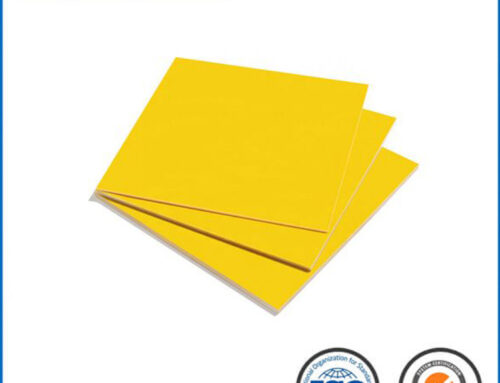Fiberglass epoxy boards are widely used in the electronics industry for making printed circuit boards (PCBs) and other mechanical supports due to their excellent electrical insulation and mechanical properties. Among the most common types of fiberglass epoxy boards are FR4 and FR5. This article aims to compare these two materials in terms of their properties and applications.
Comparison Table
| Property | FR4 | FR5 |
| Composition | Woven fiberglass cloth with epoxy resin | Woven fiberglass cloth with epoxy resin, higher grade |
| Thermal Resistance | Good (up to 130°C) | Better (up to 180°C) |
| Mechanical Strength | High | Higher than FR4 |
| Moisture Absorption | Moderate | Lower than FR4 |
| Flame Resistance | UL 94V-0 rating | UL 94V-0 rating, better performance |
| Cost | Lower | Higher |
| Applications | Consumer electronics, automotive | High-temperature environments, military, aerospace |
Composition and Manufacturing
Both FR4 and FR5 are made of woven fiberglass cloth impregnated with epoxy resin. However, FR5 uses a higher grade of resin that provides better thermal and mechanical properties.
Thermal Resistance
FR4 boards are suitable for applications with a maximum temperature of around 130°C. FR5, on the other hand, can withstand temperatures up to 180°C, making it a better choice for high-temperature environments.
Mechanical Strength
While both materials offer high mechanical strength, FR5 is superior to FR4. This makes FR5 more suitable for applications where higher mechanical strength is required.
Moisture Absorption
FR5 has a lower moisture absorption rate compared to FR4, which improves its performance in humid environments and enhances its electrical insulation properties.
Flame Resistance
Both materials have a UL 94V-0 rating, indicating good flame resistance. However, FR5 shows better performance in this aspect, making it a safer choice in applications where fire safety is a critical concern.
Cost
FR4 is generally less expensive than FR5, making it a more cost-effective option for applications where the superior properties of FR5 are not necessary.
Applications
FR4 is commonly used in consumer electronics and automotive applications, while FR5 is preferred in high-temperature environments and in industries like military and aerospace that require higher performance standards.
Conclusion
Both FR4 and FR5 are excellent materials for PCBs and other mechanical supports in electronics. The choice between them depends on the specific requirements of the application, such as temperature resistance, mechanical strength, and cost considerations. FR5 is generally used in more demanding environments, while FR4 is sufficient for most common applications.
More:




